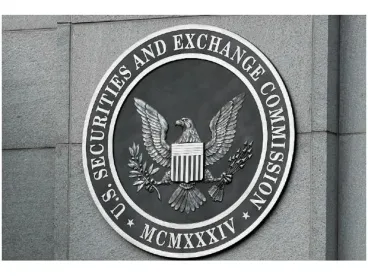At a June 7, 2021, conference, Securities and Exchange Commission (SEC) Chairman Gary Gensler shared plans to “freshen up” Exchange Act Rule 10b5-1. He directed SEC staff to consider and recommend certain restrictions on the use of 10b5-1 trading plans.
Corporate executives and insiders are frequently exposed to insider information, which can make it difficult for them to buy and sell company shares without the risk of insider trading. To address this problem, the SEC enacted the Rule 10b5-1 safe harbor. The rule allows corporate insiders—acting in good faith and while not in possession of material nonpublic information (MNPI)—to create a formal trading plan for future stock transactions. The use of a 10b5-1 plan provides an affirmative defense against allegations of insider trading.
IN DEPTH
During the conference, Chairman Gensler said he believes tightening restrictions on the use of 10b5-1 trading plans would increase investor confidence and ensure a level playing field in the market.
Chairman Gensler discussed the following potential adjustments to Rule 10b5-1:
-
Establishing a four- to six-month “cooling-off” period before trading can occur under a new 10b5-1 plan. At present, 39% of plans begin trading within the first 60 days of establishing a 10b5-1 plan, according to figures cited by Chairman Gensler. He expressed concern that the lack of a cooling-off period is viewed by “some bad actors…as a loophole to participate in insider trading.”
-
Restricting the ability to cancel 10b5-1 plans. Currently, insiders may cancel 10b5-1 plans whenever they wish, even if they possess MNPI. SEC staff have been directed “to consider limitations on when and how plans can be canceled.” Chairman Gensler emphasized that even under the current rule, “cancelling or amending any 10b5-1 plans calls into question whether they were entered into in good faith. If insiders don’t act in good faith when using 10b5-1 plans, those plans will not offer them an affirmative defense (to insider trading).”
-
Mandating “more disclosure regarding the adoption, modification, and terms of 10b5-1 plans.” As it stands, there is no mandated public disclosure when a 10b5-1 plan is established.
-
Limiting the number of 10b5-1 plans an insider may adopt. There are currently no limits to the number of 10b5-1 plans that an insider can adopt. Chairman Gensler noted that “insiders might mistakenly think they have a ‘free option’ to pick amongst favorable plans as they please.”
The forcefulness of Chairman Gensler’s remarks may also portend SEC Division of Enforcement inquiries into “good faith” factors, with the focus on whether plans have been entered into, amended or cancelled while in possession of MNPI. For example, a waiting period (e.g., 14-30 days) during which no trades can occur under the plan can help prevent the appearance that the person designed the plan as a cover for trades based on MNPI. SEC rulemaking often identifies the need for investor protection and enforcement actions that address perceived abuses; these abuses are often cited to support the need for regulatory action.
As a prophylactic measure, we recommend that chief legal officers “freshen up” the review of their executives’ plan documentation and other compliance mechanisms.






 />i
/>i

